Chinese gardens were designed as an artistic expression and appreciation of the landscape before the 20th century. The gardens were inspired by Taoism, Buddhism, and Confucianism. Nature also inspired garden designs like mountains and rivers, and most had irregular geometrical layouts.
What are Chinese Gardens?
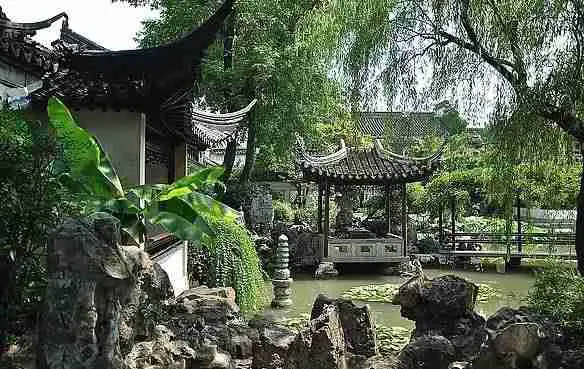
Chinese gardens date back 3000 years ago and were built by nobles for pleasure and to impress. a garden was called a yuan (园 /ywen/), as known as yuan lin. Other gardens were more intimate and were made as escape havens from the outside world. The reflective gardens were created by scholars, former government officials, poets, and soldiers. These gardens mimicked beautiful natural landscapes and symbolized the harmony that should exist between man and nature. These gardens comprised a wall, a pond, rocks, trees, flowers, and an array of halls and pavilions.
Types of Chinese gardens
These gardens were pet projects by emperors and empresses of various ancient Chines dynasties. Private gardens, on the other hand, were created in South China and were mainly for retreat and relaxation for scholars who needed a place to escape from the hustles of city life.
The southern gardens are mostly found on the south of River Yangtze. Some of the most notable ones are Suzhou, Nanjing, Hangzhou, and Wuxi. The private gardens are less extravagant than the imperial gardens, but their simplicity brings out a unique form of beauty.
The gardens were mainly used for hosting parties. Other gardens include cemetery gardens, resort parks, courtyards, temple gardens for Buddhists, Dao, and Confucius, and college gardens.
What plants are in a Chinese Garden?
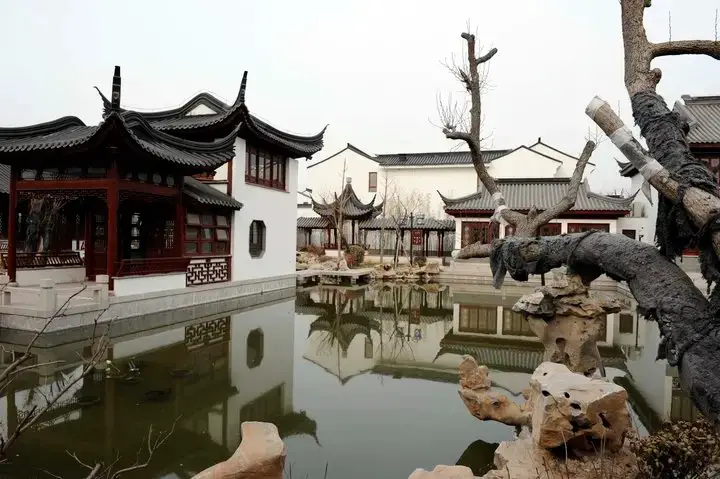
Chinese gardens are made with many different plants and are comprised of perennials, annuals, aquatics, trees, shrubs, and bamboo. The gardens also contain pine trees and Bonsai plants. The designers follow a traditional concept when picking plants for a garden. The plants chosen carry a symbolic meaning in Chinese literature and poetry. Some of the plants that feature in Chinese gardens include olives, magnolia, Azalea, and spirea.
Symbolism of plants in Chinese gardens
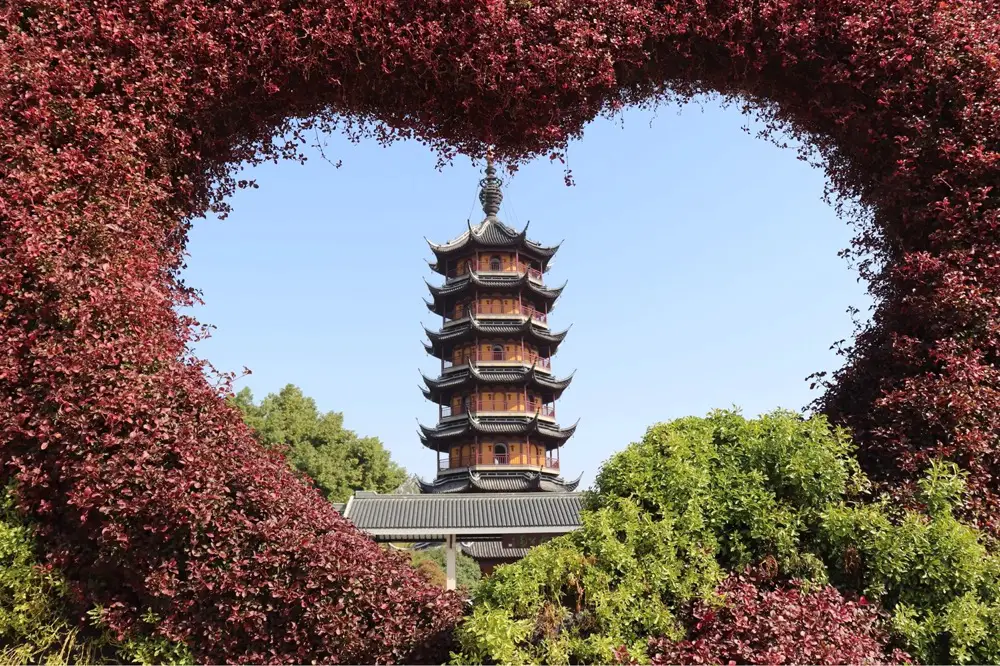
Chinese garden plants were not just picked based on their beauty or gorgeous blooms. They had significant meaning in ancient Chinese culture. The most common plants are pine, bamboo, cypress, plum, peony, orchid, and chrysanthemum.
Some plants were linked to great historic figures, while others were associated with their places of origin. The peony was closely linked to Luoyang, where it was skillfully cultivated. The bamboo was a symbol of the perfect Confucian gentleman who had his act together and had control of his emotions. This gentleman could bend without breaking and signified resilience.
The pone symbolized a virtuous scholar who weathered all the political storms due to their rugged exterior. The cypress expressed longevity due to its twisted and withered exterior. The plantain symbolized a poor scholar who could not afford paper and silk all the time and had to use the wide leaves as writing materials. The leaves also produced a melancholic sound when hit by raindrops.
What do rocks in Chinese gardens represent?
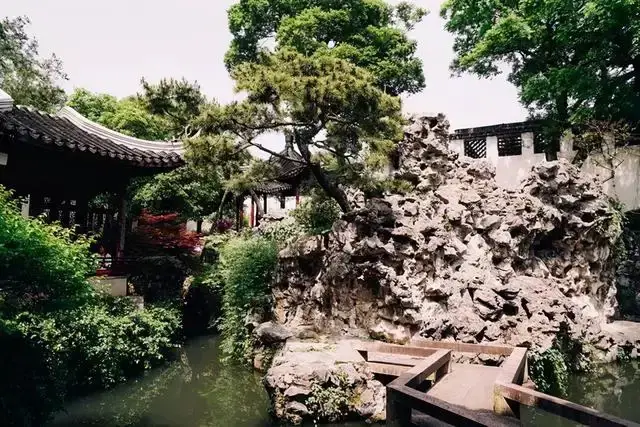
Rocks are another significant element of a Chinese garden. The gardens were built to represent the harmony of man and nature and replicated natural sceneries. The rock represents a mountain, while a group of rocks represents mountain ranges.
The mountain peak symbolizes stability virtue and endurance. Rocks were categorized according to texture, color, softness, and transparency. They were raised to the rank of art articles, and the famous limestone rocks of Lake Tai became highly coveted for gardens due to their natural sculpture.
Chinese garden symbolism
The Chinese gardens symbolize a space where natural symbols of the natural world are brought together. In other cultures, gardens are comprised of neat flowerbeds with fountains and neat paths. However, the Chinese gardens take Fengshui geometrical shapes, whose intention is not to compromise nature with man’s idea of order but let the garden remain as natural as possible. The ancient gardens were symbols of refinement and luxury for nobles and scholars.
History of Chinese gardens
Chinese gardens date back to the Zhou Dynasty 1046 to 256 BCE. They were places of relaxation for nobles and were used for hunting. In the Han dynasty, the gardens evolved into museum-like places for exotic plants and animal collections. During the six dynasties period, gardens became more complex in design, and symbolic aesthetics were introduced.
The Song Dynasty of 960 to 1279 CE saw many scholars and noble become rock and plant collectors as a hobby. The rarest and most dazzling garden in this period came from southern China, where the climate allowed the growth of exotic and rare plant species. The peak of these gardens came in the Ming Dynasty of 1368 to 1644 CE. This period saw some of the most spectacular Chinese gardens in history that only came second to the imperial grounds.
Famous Chinese gardens
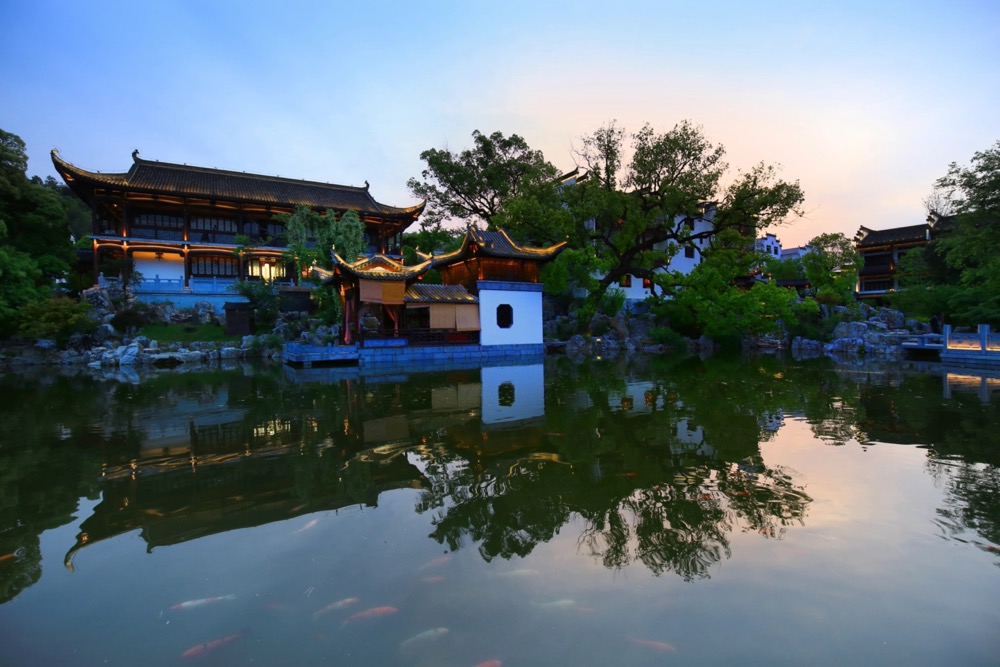
China has four most famous gardens in the country and the world. The summer palace in Beijing takes the lead as the best Roy garden, the humble administrator’s garden comes in second place as the archetype of imperial gardens, lingering garden follows as the poetic Suzhou garden and the Chengde Imperial summer resort as the archetype of Chinese landscape. Other spectacular gardens include the Yuyuan garden, Norbulingka garden, and the master o the nets garden.
What is the difference between Chinese and Japanese Gardens?
The main difference between Chinese and Japanese gardens is that the latter’s flowers and plants are pruned to achieve beauty, while the former’s plants and flowers ate pruned to achieve the most natural look. The Japanese versions tend to be smaller than the Chinese, and the structures in the former are significantly lesser than the latter. Chinese gardens have limestone and sandstones, while gardens have denser and heavier rocks, which are mostly metamorphic granite.
Conclusion
Chinese gardens continue to be centers of tourist attraction in the country, with some being the most sophisticated in the world. The designs have evolved with time, from simple rock and plants to a magnificent array of plants and architecture.
I used to be able to fіnd good info from your artiϲles.